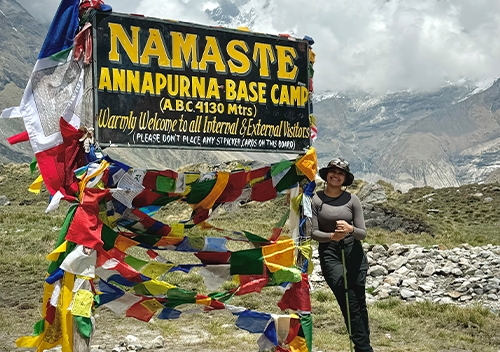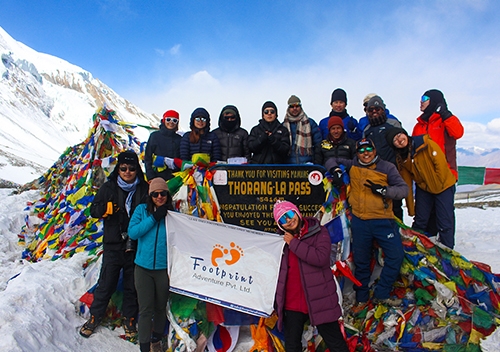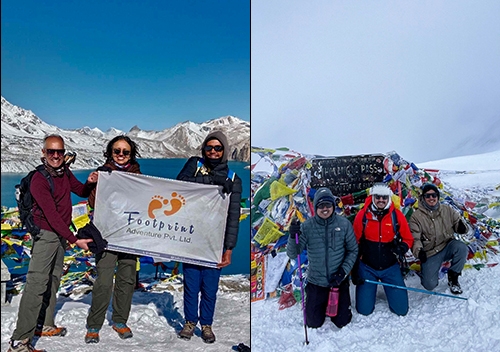Overview of the Annapurna Base Camp Trek
The Annapurna base camp trek is one of the most spectacular journeys, taking you through green valleys, attractive hamlets, and magnificent mountains. Nestled in the Annapurna Region and the Annapurna Conservation Area, this trek takes you to the Base Camp at 4,130 meters (13,550 feet), encircled by the giants Annapurna I, Machapuchare, and Hiunchuli. As you walk along this incredible trail, you’ll experience breathtaking landscapes and immerse yourself in the rich culture of the local communities.

The unique landscapes will enhance your trekking adventure as you interact with the Gurung and Magar peoples, adding fun and beauty. The trek is well-maintained and transparent, making it suitable for inexperienced trekkers. However, it also retains enough difficulty for veteran trekkers to enjoy it.
The Annapurna Base Camp trekkingroute highlights the diverse biosphere, from the tropical lowland jungles to the alpine landscapes. Along the road, visitors will stop at scenic tea houses to take a break and savor some local cuisine.
The essence of this trek goes beyond attaining the final destination; indeed, it is appreciating every single minute of the trip—from the very first day until the last spectacular view of the base camp.

An excellent alternative is the Annapurna Circuit Trek, which encircles the Annapurna massif and includes crossing the Thorong La Passat 5,416 meters (17,769 feet). Over 15 to 20 days, the trek showcases diverse landscapes and rich local culture.
Annapurna Base Camp Trek Difficulty and Safety
The most common question for those interested in the Annapurna Base Camp Trek is its difficulty. This trek is often categorized as moderately challenging; even beginners with a reasonable fitness level should be able to do it. This Beginners Guide to Annapurna Base Camp Trek will help you understand everything you need to prepare for this adventure, from the trail conditions to the altitude and physical preparation required.

Altitude:
- The maximum height attained is 4130 m (13 550 feet).
- Possibility of getting altitude sickness (headaches, nausea).
- It is important to note that high altitude involvement takes time; be prepared for some above or below days at focal points.
Terrain:
- Combination of clear walking routes, rocky areas, and steep climbing sections.
- Supportive and traction-wise, good trekking boots must be worn.
- Best trekking poles for knee support and strain alleviation.
Weather:
- Spring (March to May) and autumn (September to November) are the most favorable seasons.
- It is changeable and will not hesitate to rain or snow; be ready.
- There is a need to carry waterproof clothing and warm weather inclusions depending on the weather.
Preparation is key
- Make the body ready using cardio and strength-building exercises to increase endurance levels.
- Train in hiking, especially off-the-beaten-path terrain, if you can.
Safety considerations
- Always Trek With a Guide: It is better to help with orientation and, most importantly, for safety.
- Always Hydrate and Eat Healthy: Drink enough fluids and eat healthy food.
- Be Aware and Be Ready: Understand the signs of altitude sickness and its implications; have a first aid attendant with you.
Many trekkers make this trip, which is an excellent experience for those who prepare well!
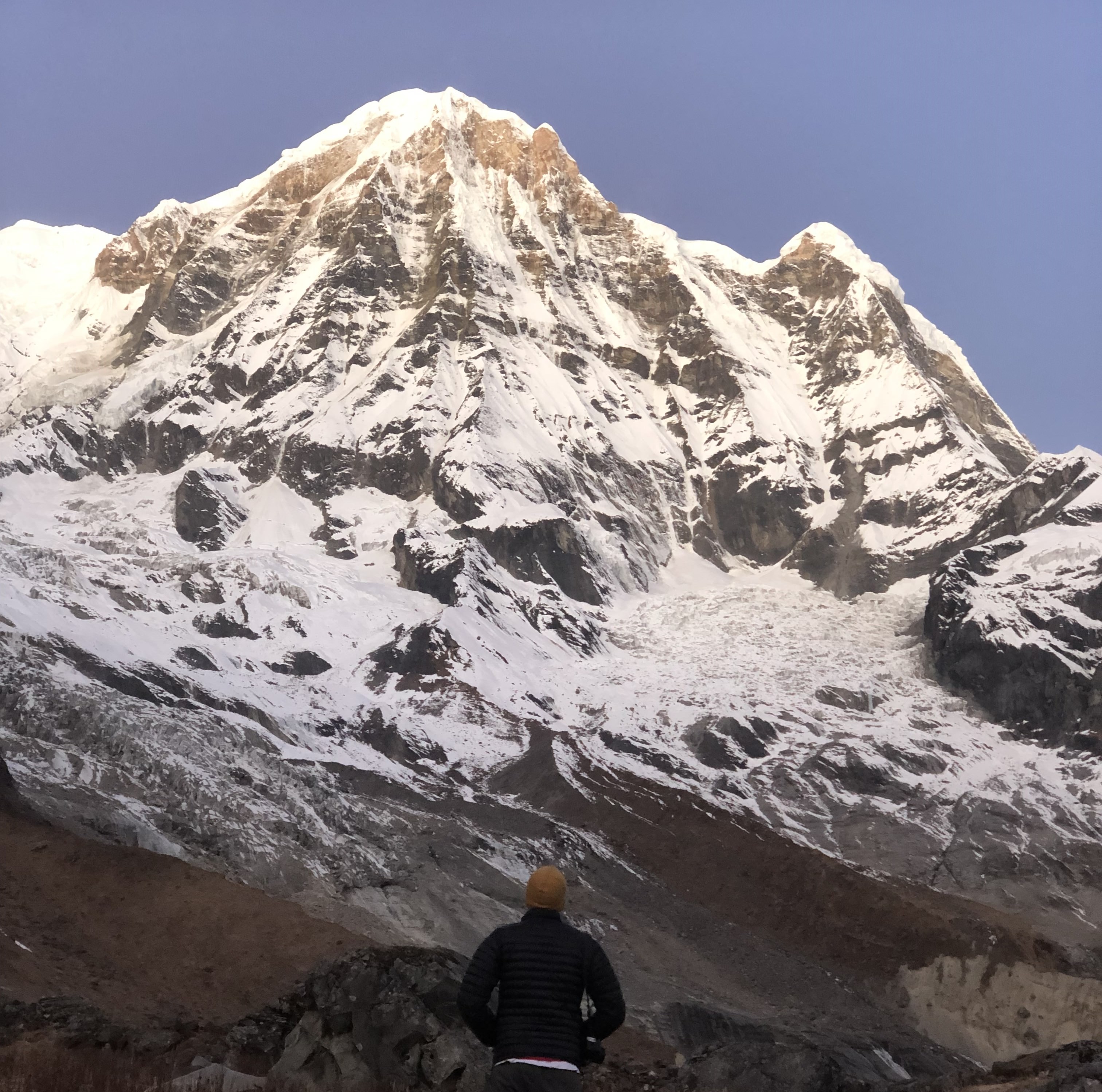
How many days do you trek Annapurna base camp?
One of the typical queries of trekkers is about the duration of their trek at Annapurna base camp. The trek usually takes about a week and a half or two, depending on the Annapurna Base Camp trekking itinerary and one’s pace. A few possibilities include:
Standard Itinerary (7 to 12 days):
- Generally, a whole trek will take 10–12 days, with additional travel days to and from Pokhara's starting and finishing points.
- This also helps ensure proper acclimatization and more time to ooze the beauty of the surrounding area.
5-Day Trek Option:
- The 5-day Annapurna Base Camp trek option is often requested by tourists who need more time.
- Consequently, this fast-paced schedule is more strenuous and demands high endurance capacity.
- It often entails high trekking hours each day with few breaks and few off days.
Recommended Read:Reasons to trek Annapurna Base Camp trek
Sample Itinerary Overview:
The Annapurna Base Camp Trek typically spans 10 to 14 days, depending on your pace and the specific route. The journey begins in Pokhara, where trekkers prepare for the adventure ahead. From there, the trail leads through picturesque villages like Ghandruk and Chhomrong, with stunning views of the Annapurna range at every turn.
Trekkers will gradually ascend, reaching the base camp to enjoy breathtaking panoramic views of Annapurna I and other majestic peaks.
Day 1: Drive or fly to Pokhara, then drive to Nayapul and start your trek towards Tikhedhunga or Ulleri.
Day 2: On this day, trekkers will arrive at Ghorepani, known for its breathtaking sunrises.
Day 3: Early morning Poon Hill hike and then trek to Tadapani.
Day 4: The trek will continue to Chhomrong, and entry into the Annapurna region will be possible.
Day 5: Trek to the Himalayas, where you will encounter dense greenery and exquisite views.
Day 6: Arrive at Annapurna Base Camp, where breathtaking sights of the Annapurna range are enjoyed.
Day 7: Backtrack trek to Bamboo or the Himalayas.
Day 8: Trek back to Chhomrong.
Day 9: Trek to Nayapul and drive back to Pokhara.
Day 10: Staying in Pokhara or departing to other areas of the country is optional.
Selecting a suitable duration for a trek is difficult since it depends on a person’s fitness level, previous experience, and available time. Make the necessary arrangements and schedule to maximize your enjoyment on the Annapurna Base Camp trip!
Recommended Read:Annapurna Base Camp Guide
How to Reach Annapurna Base Camp: Understanding the Altitude & Challenges
Getting to Annapurna Base Camp is a step-by-step journey, involving a mix of transportation and trekking.
Step 1: Reaching Pokhara
Your adventure begins in Pokhara, Nepal's most picturesque city and the gateway to the Annapurna region.
- By Air: A 25-minute flight from Kathmandu offers spectacular views of the Himalayas.
- By Road: A 6-8 hour drive from Kathmandu, which is a scenic journey through hills and rivers.
Step 2: Trekking Towards ABC
Most trekkers start their journey from Nayapul or Ghandruk, a short drive from Pokhara. The trail gradually ascends through rhododendron forests, terraced fields, and traditional villages before reaching the base camp.
Altitude & Acclimatization
Even though 4,130m isn't extreme, altitude sickness is still a concern. The key to avoiding it:
- Walk slowly—don't rush!
- Stay hydrated (drink at least 3-4 liters of water daily).
- Take proper rest days if needed.
- Listen to your body—if you feel dizzy or nauseous, stop and rest.
Common Challenges on the ABC Trek
- Steep & Endless Stone Steps: Especially tough from Chhomrong to Deurali.
- Unpredictable Weather: Expect sunny mornings, cold nights, and occasional rain.
- Trekking Hours: Each day involves walking 5-7 hours on average.
What to Pack for the Annapurna Base Camp Trek?

Packing smart is essential to preparing for an expedition to ABC Trek. So here is a short packing list for the Annapurna Base Camp trek to ensure you are ready for all the weather changes. This Beginners Guide to Annapurna Base Camp Trek will cover the essentials you’ll need, from clothing and gear to safety items:
Clothes:
- Base Layers: Quick-dry thermal tops and bottoms that help protect you from moisture.
- Insulation Layers: Warm fleece or down jackets that are intended for use on cold nights.
- Outer Layers: Heavy rain and windproof jackets that can prevent both rain and wind from getting inside.
- Trekking Pants: Lightweight, quick-drying pants; you should wear shorts on hot days.
- Socks: Trekking socks made of wool or synthetic materials are recommended to avoid blisters and warm the feet.
Footwear:
- Trekking Boots: Proper waterproof boots that support the ankle very well.
- Camp Shoes: Shoes that are not heavyweight and have strappy slippers for comfortable camp wear.
Accessories:
- Hats and Gloves: A warm hat and gloves for the cold mornings and evenings.
- Sunglasses: Sunglasses with UV protection from the midday sun glare.
- Buff or Scarf: Helps keep warm and prevent dust and wind from penetrating.
Trekking Gear:
- Backpack: Comfortable daypack for your essentials when you go for the trek.
- Trekking Poles: Aids in regaining balance in conquered steep and rugged grounds.
Hydration and Nutrition:
- Water Bottles or Hydration Bladder: Maintain fluid balance with adequate water intake during the trek.
- Snacks: Energy bars, nuts, and dried fruits for quick energy bursts.
Personal Items:
- First Aid Kit: The minimum you would want is bandages, painkillers, and pills for altitude sickness.
- Toiletries: Biodegradable soap, a toothbrush, and some toothpaste alongside a toilet paper roll.
- Sunscreen and Lip Balm: Helps shield the skin from sunburn and the lips from cracking.
Technology:
- Camera or Smartphone: To take beautiful sights and events that will be hard to forget.
- Portable Charger: Helps to charge your phones and other devices portablely, especially in faraway places.
Documents:
- Permits: Remember your trekking permits and some copies of essential documents.
- Cash: Some areas may not accept cards, so carry sufficient Nepali rupees.
Food & Meals on the Annapurna Base Camp Trek
After long trekking hours, nothing beats a hot, comforting meal. Teahouses along the ABC route serve nutritious and hearty food to keep you energized.
What's on the Menu?
- Dal Bhat (Rice & Lentils): The go-to meal for trekkers. High in energy and endlessly refillable!
- Momo (Dumplings): A favorite among trekkers—vegetable, chicken, or cheese-filled dumplings.
- Thukpa (Noodle Soup): A warm, soupy delight perfect for chilly nights.
- Pancakes & Porridge: Popular breakfast options to kickstart your day.
- Tea & Coffee: Try the local ginger lemon tea—it's refreshing and great for altitude sickness.
For more in details, Click Here.
Is Annapurna Base Camp Trek Safe?
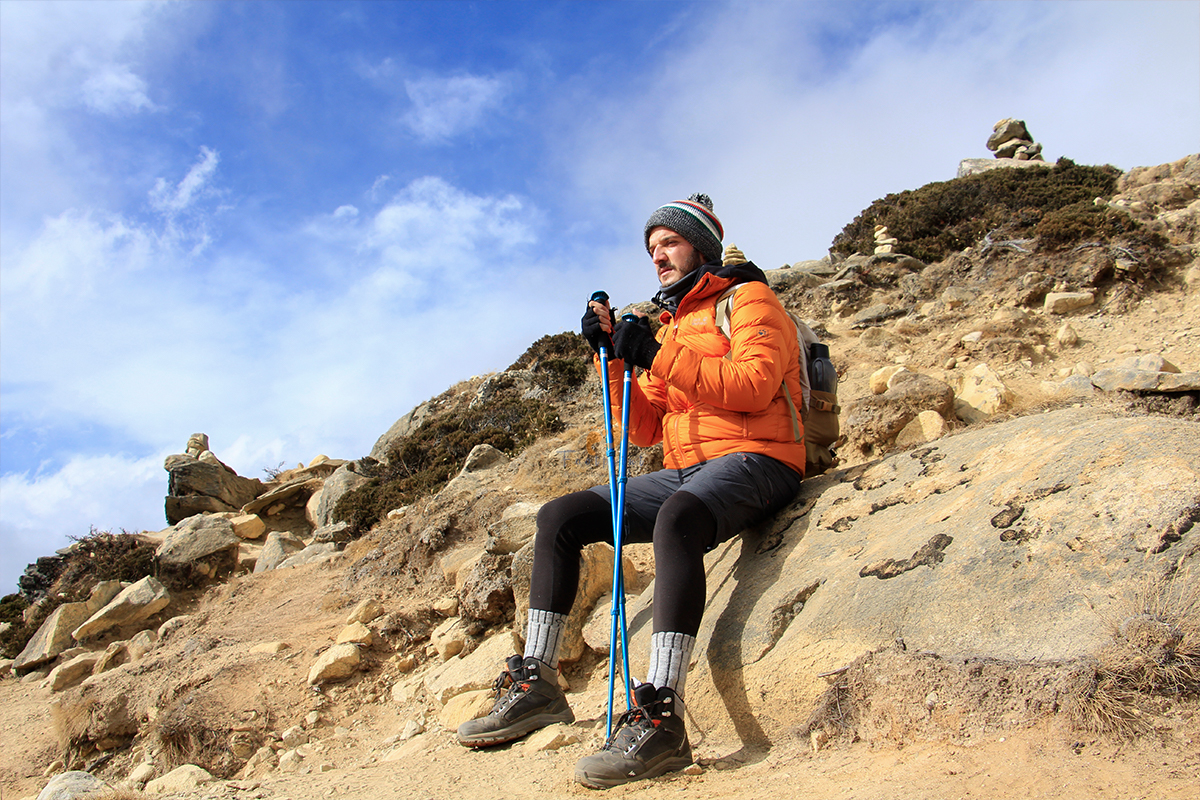
When it comes to the Annapurna Base Camp Trek, safety is of paramount importance. Here are a few things to keep in mind to have a safe and enjoyable adventure:
Altitude Considerations:
- Acclimatization: The most appropriate measures to help your body cope with the higher elevations and reduce the chances of developing altitude sickness are to climb up a little and then rest. The suggested program is followed with enough rest days dedicated to the climb.
- Recognize Symptoms: Look out for the signs of altitude illness, however mild they might seem, including headaches, nausea, and dizziness. In the case of extreme symptoms, immediately make your way down.
Weather Awareness:
- Trekking Season: Remember that the weather in the mountains can change at any time. Therefore, following the weather forecast and preparing for rain/snow or high temperatures is essential.
Trekking with a Guide:
- Hire a Local Guide: You can also trek in groups or hire a local guide for Annapurna Treks, who knows the place well. This assists in navigation and during any crisis.
- Safety in Numbers: Group trekking is safer because there is a support system in case of emergencies.
Health Preparations:
- Stay Hydrated: Drink a lot of water to stay hydrated and reduce the effects of altitude sickness.
- First Aid Kit: You should also have a basic first aid box for easy access, especially when you travel with young children. Include common medicines whenever possible.
Trekking Gear:
- Quality Equipment: Due to the nature of trekking, ensure you purchase high-quality trekking wear and accessories to keep you warm and shield yourself from rain or snow.
- Footwear: It is advisable to buy waterproof trekking boots that fit well, as ill-fitting boots can lead to injuries and discomfort.
Communication:
- Mobile Connectivity: It is advisable to carry a fully charged phone and rent a local SIM card for emergencies.
- Emergency Contacts: Please remember to provide family or friends with a copy of your Annapurna base camp trekking itinerary and try to have some critical cell phone numbers on hand.
Local Guidelines:
- Follow local regulations: Abide by the norms of the people, the local animals, and the terrain. Adhere to advice and regulations imposed by local officials and trekking operators.
That is why taking such measures and being ready in advance is good. Thus, you can go to Annapurna Base Camp with a light and open mind to admire the Himalayas!
How Difficult is the Annapurna Base Camp Trek?
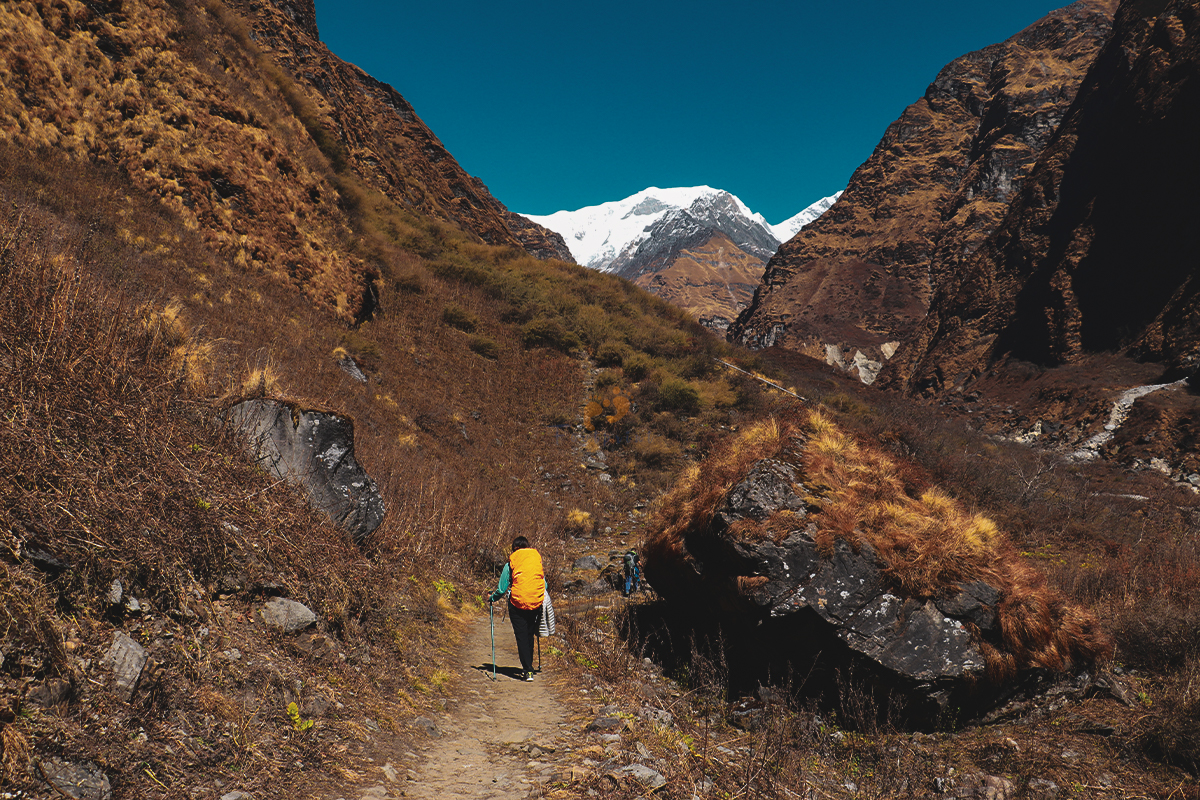
While the Annapurna Base Camp Trek is famous for its breathtaking views, it also offers several difficulties. Here is a short account of the degree of difficulty regarding the Trek:
Trek Duration:
The trek, on average, lasts 10–14 days, but this can change according to one’s itinerary and limits. The long time on schedule allows for resting and touring the environment.
Trail Conditions:
Trails can range from well-kept tracks to quite steep and uneven ones. Get ready for some boulders, step flights, and wet grounds, especially during the rainy season.
Altitude Gain:
The maximum elevation attained during the trek is 4,130 m (13,550 ft) at Annapurna Base Camp. Ascending can be difficult, so adequate acclimatization is crucial to avoid altitude sickness.
Physical Fitness:
Although the trek is possible with the most fit persons, preparing sufficiently before the trek is always advisable. Cardio fitness and leg strength are the most critical factors.
Weather Conditions:
The weather can change quickly in the mountains, with low temperatures experienced at high altitudes. Adjust to changes in weather conditions, which may also influence your trekking activities.
Daily trekking hours:
Daily trekking hours may range from 4 to 8 hours, plus or minus, depending on the planned activities for the day. Some days will be less complicated than others; this depends on the day’s altitude gain, among other reasons.
Support Services:
However, most trekkers prefer to hire a guide and a porter, making the trek much more bearable. The guides would be there mostly, but they would also help the clients stand out from some challenging parts more easily.
Personal Experience:
The level of difficulty you will encounter will also depend on how much you have trekked in the past. In my opinion, only beginners may find hiking more accessible, although in many cases, thanks to the will and proper training, almost all trekkers can do it.
When planning your journey, you might wonder about the differences between the Annapurna Base Camp Trek and the Annapurna Circuit Trek. For a detailed comparison of these two iconic treks, check out our guide on Annapurna Base Camp Trek vs. Annapurna Circuit Trek.
Why ABC Trek is Perfect for Beginners
As a beginner trekker, choosing the perfect trek is important. The Annapurna Base Camp Trek stands out as one of Nepal's best beginner-friendly treks. Here's why:
1. It's Challenging but Doable
Unlike other high-altitude treks, ABC is considered moderate in difficulty. Yes, there are steep climbs and long trekking hours, but it's nothing a well-paced, determined trekker can't handle. You don't need technical mountaineering skills—just a reasonable level of fitness and a love for the outdoors.
2. Shorter Duration Compared to Other Treks
Not everyone can spare the time (or patience) for a four-week trek. The ABC trek is around 7-12 days, depending on your pace and itinerary. It's thus a perfect choice if you're looking for an excellent Himalayan experience without too long a commitment.
3. Lower Risk of Altitude Sickness
While 4,130m (13,550ft) is still high, it's significantly lower than other famous base camps, such as Everest Base Camp (5,364m). The danger of severe altitude sickness is reduced, so it's safer for first-timers. Adequate hydration and acclimatization are still necessary, but the trek is much more forgiving than other higher-altitude alternatives.
4. Unbeatable Scenery & Cultural Experience
ABC offers a breathtaking mixture of Himalayan giant peaks, forests, tilled terraces, and beautiful villages en route. You will pass through Gurung and Magar villages where you have the opportunity to see Nepali hospitality and culture in its finest forms.
Annapurna Base Camp Trekking Map: Routes & Landmarks
Knowing the route and key landmarks helps you plan better. The most common trekking route follows this path:
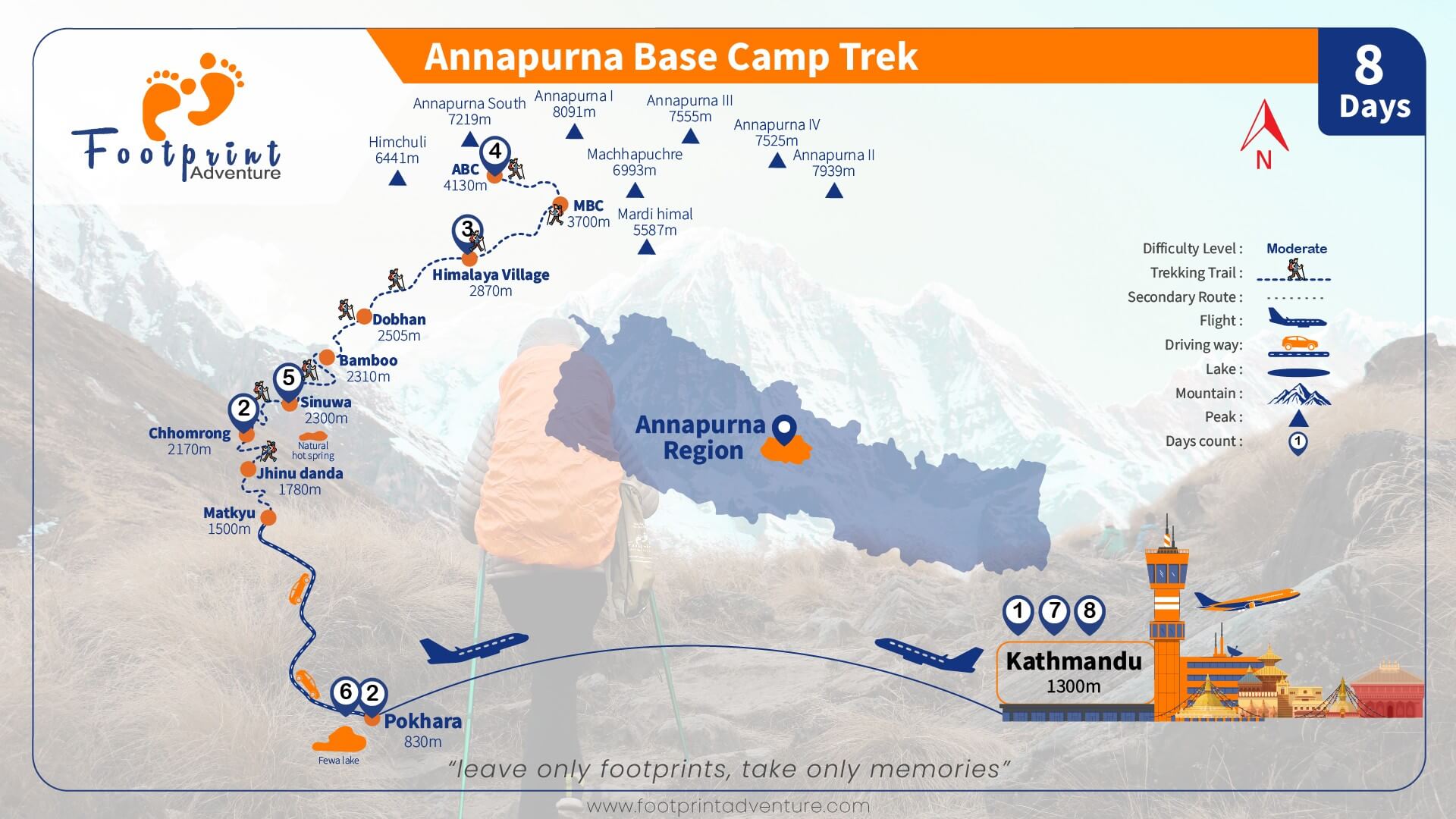
Standard ABC Trek Route
- Pokhara to Nayapul/Ghandruk (Drive + Trek)
- Ghandruk to Chhomrong
- Chhomrong to Bamboo
- Bamboo to Deurali
- Deurali to Annapurna Base Camp (via Machhapuchhre Base Camp - MBC)
- ABC back to Bamboo
- Bamboo to Jhinu Danda (Hot Springs!)
- Jhinu Danda to Pokhara (Drive back)
Major Landmarks on the Trek
- Poon Hill (Optional Side Trek): A stunning sunrise viewpoint.
- Machhapuchhre Base Camp (MBC): The last stop before reaching ABC, offering jaw-dropping views.
- Jhinu Danda Hot Springs: A natural hot spring where you can soak your tired muscles.
Final Tips for First-Time Trekkers
- Prepare in Advance: Go on practice hikes before attempting ABC.
- Pack Smart: Lightweight but warm clothing, sturdy boots, trekking poles, and rain gear are essentials.
- Go with a Guide or Group: It makes the trek easier and safer.
- Be Flexible: Weather and altitude may require slight itinerary changes.
To Sum Up

To conclude, the Annapurna Base Camp Trek is a delightful journey, but one has to prepare and be fit for it. In proper planning, every adventurous spirit will manage to do this trek and appreciate the stunning views and beauty of the Annapurna region. For expert guidance and support, visit Footprint Adventure to help you make the most of your trekking experience! This Beginners Guide to Annapurna Base Camp Trek will prepare you for an unforgettable adventure.
Explore our Annapurna Region Trekking Packages:
Nar-Phu Valley Trek - 12 Days
Ghorepani Poon Hill Trek
Mardi Himal Base Camp Trek
Annapurna Circuit & Tilicho Lake Trek
FAQs on Beginners Guide to Annapurna Base Camp Trek
Can beginners do Annapurna Base Camp?
The Annapurna base camp trek is beginner-friendly and can be completed by anyone physically fit and well-prepared. It is recommended that beginners engage in some training and opt for detailed schedules that include acclimatization.
Is the Annapurna Base Camp Trek easy?
The Annapurna Base Camp Trek difficulty level is easy to moderate, but it also has its share of problems, like increasing altitude and fluctuating path surfaces. Trekkers of average fitness levels can do it, but most importantly, it needs focus and sometimes a lot of push.
How to prepare for the Annapurna Base Camp Trek?
Preparation encompasses enhancing cardiovascular endurance via hiking, running, and cycling. Practice on different surfaces and with a weight on the back is also beneficial. Learn about the altitude and climatic conditions of the route and dress appropriately.
Is Annapurna Base Camp harder than Everest?
Though treks of this nature are not easy, some believe that the Annapurna Base Camp Trek is easier as the altitude does not reach extremes like Everest Base Camp—nevertheless, both call for a certain level of fitness and preparation.
Can you do Annapurna Base Camp without a guide?
In theory, it is possible to travel to Annapurna Base Camp without hiring a guide, although doing so, particularly for an amateur, is not advisable. A guide improves safety, adds insight into the area, and aids in mastering the routes.
Can a beginner climb Annapurna?
Climbing Annapurna is complicated and not realistic for novices. The Annapurna Base Camp Trek is suitable for beginners; however, climbing the peak of Annapurna is a different story, and such a feat requires a professional high-altitude climber.
How fit must you be for Annapurna Base Camp?
The trek's fitness level is moderate, so you need a certain degree of fitness. To make the trek more accessible, you should regularly do cardiovascular exercise, strength training, and hiking practice.
Where do you sleep in Annapurna Base Camp?
Many different types of accommodation are available along the trek, including tea houses and lodges. At Annapurna base camp, tents will be under specific camps and lodges depending on the season and trekking agency.













